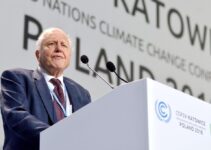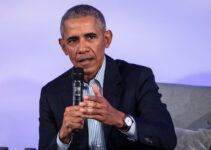July 22.07.20: Thank you very much. Thank you. Today, my administration reached a historic agreement with Pfizer to produce and deliver 100 million doses of their vaccine immediately following its approval. Hopefully, the approval process will go very quickly. And we think we have a winner there. We also think we have other companies right behind that are doing very well on the vaccines — long ahead of schedule.
As part of Operation Warp Speed, this agreement will also ensure that we receive an additional 500 million doses shortly thereafter. This is another crucial step in our effort to develop, manufacture, and distribute a vaccine in record-breaking time — really a very small fraction of the time, based on previous schedules. I want to thank the FDA. I want to thank everybody involved. It’s been an incredible process.
As discussed yesterday, the China virus poses the greatest threat to our senior citizens, as we all know. The median age for those who die from the virus is 78 years old, and nearly half of the deaths have occurred among those living in nursing homes or long-term care facilities. That’s really something.
In other words, approximately half of the fatalities have occurred among less than 1 percent of the U.S. population. So think of that: less than 1 percent, half of the fatalities. So we know what to look for.
From the beginning, we have made it our top priority to shelter our seniors. In early March, we announced guidelines suspending all medically unnecessary visits to nursing homes and prioritized resources for those facilities. And we gave it a very strong priority. FEMA has sent shipments to many different locations of protective equipment, and it’s going directly to 15,400 Medicaid- and Medicare-certified nursing homes throughout the country.
Today, I’d like to provide an update on the additional actions we’ve been able to take, and they’ve been very constructive. First, we’re requiring increased testing of the nursing home personnel in states where you had the worst outbreaks. All personnel will be tested at the highest level. We’re distributing 15,000 rapid, point-of-care diagnostic devices to support this effort. These are the tests where it takes five minutes to fifteen minutes. They’re very accurate. They’re very good. And we’re sending them all over the country. And over 600 devices will be also shipped this week to additional facilities.
Second, HHS will be distributing an additional $5 billion from the Provider Relief Fund to all nursing homes. Nursing homes in higher-risk areas will be receiving more funding. This money can be used to address critical needs, including the hiring of additional staff, increasing testing, and providing technology support so residents can connect their families and they can connect to their families. They are having a tremendous time. They want to be with their loved ones. They can’t do it, so what we’re doing is we’re working it so that we can connect — have them connect with their families if they’re not able to visit.
Third, we’ve been identifying especially high-risk nursing homes and sharing that information with the governors, so that the governors and their staffs can take appropriate action. We’re able to find — because of the testing programs and other means, we’re able to find certain areas that are very high-risk. The governors can then take action.
Additionally, CMS, CDC, and the U.S. Public Health Service are providing enhanced technical assistance and support, including visits to the highest-risk nursing homes. And that’s their priority right now: nursing homes, but the highest-risk nursing homes.
CMS and CDC are implementing a national training program focused on infection control for those nursing homes that need it most. And we have them surveyed, and we have them mostly pinpointed.
Over the past few months, we’ve created a surveillance system to detect outbreaks. And currently, 99 percent of all nursing homes are reporting directly to it, so we have great data. When a nursing home has three or more cases, we alert the state and make sure that it responds very quickly. We check on it and make sure they respond very quickly.
I want to send a message of support and hope to every senior citizen who has been dealing with the struggle of isolation in what should be the golden years of your life. We will get to the other end of that tunnel very quickly, we hope. The light is starting to shine. We will get there very quickly. But we send our love; we send a message of love — very important. We’re with you all the way.
As far as the outbreak in the Sun Belt, I said yesterday: We continue to vigorously combat the rise of cases in the South and Southwest and the West. We’re closely monitoring and aggressively acting to control the infection in Texas, Arizona, California, Florida. Arizona is starting to come down. Done a very good job. They’re all doing a good job. They’re very talented people.
There are likely a number of causes for the spike in infections. Cases started to rise among young Americans shortly after demonstrations — which you know very well about — which presumably triggered a broader relaxation of mitigation efforts nationwide. And a substantial increase in travel also was a cause.
Increased gathering on holidays, such as Memorial Day, as well as young people closely congregating at bars and probably other places — maybe beaches — four or five different listed places; we have 12 that are listed on the guide — likely also contributed.
We’re also sharing a 2,000-mile border with Mexico, as we know very well, and cases are surging in Mexico, unfortunately. I was with the President, and it’s a big problem for Mexico. But cases are surging very sharply and all across the rest of the Western Hemisphere.
Two hundred and fifty-seven miles of newly constructed wall along the southern border has had a great, positive impact on people coming in. And we have record-low numbers of people coming in illegally; that’s helped greatly. It was really meant for a different purpose, but it worked out very well for what we’re doing right now and for the pandemic.
Nationwide, beyond the outbreak in several states, cases remain low and very stable. Nineteen states have positive test rates of less than 5 percent. Eight states have positive test rates of less than 2 percent. Our nationwide positive test rate is beginning to decline and is currently at 8.8 percent, compared to over 16 percent at its peak in April. It’s coming down. It’s coming down fairly rapidly.
Today, we surpassed — first time — we surpassed 50 million tests. That’s far more than any country in the world. India is second, we believe. We think — 1.4 billion people; that’s about 12 million tests. We have 50 million tests.
We’re working with every state to ensure the supply of remdesivir for early case intervention and steroid treatment and various other treatments for those that are seriously ill. We’re working very closely with hospitals, doctors, nursing homes — everybody. The remdesivir has proven to be terrific. Our case fatality rate continues to decline, and we want to push this rate even lower.
The therapeutic research continues daily on new and very promising treatments, including antibody treatments and the use of blood thinners and steroids. A lot of different things are happening, and a lot of things are coming out that we wouldn’t have known a number of months ago. We’re doing tremendously well on therapeutic research and tremendously well on the vaccines.
And, frankly, therapeutically — or maybe a word even beyond that word is “cure” — would be the best of all, and we’ll see what happens. But that would be great if we could go into the hospital, and just cure people. And we’re at a position we’re actually able to — to a certain extent, with what we have right now. And we think, in a very short period of time, we’ll be able to do that.
Our strategy is to shelter the highest-risk Americans, while allowing younger and healthier citizens to return to work or school while being careful and very vigilant. Wear a mask, socially distance, and repeatedly wash your hands. Practice very, very good sanitary means. You have to do this. You have to just — you have to look at it differently. Wash your hands often. I’m finding more and more people are saying, “Wash your hands.” So wash your hands. We want young Americans to avoid packed bars and other crowded indoor gatherings.
And we’re all in this together. And as Americans, we’re going to get this complete. We’re going to do it properly. We’ve been doing it properly. Sections of the country come up that we didn’t anticipate — for instance, Florida, Texas, et cetera — but we’re working with very talented people, very brilliant people, and it’s all going to work out, and it is working out.
So, with that, I’ll take a few questions, please. Yeah, please.
Q Mr. President, I just wanted to ask you a question about the surge of federal agents to various cities.
THE PRESIDENT: Yeah.
Q The mayor of Chicago just said, moments ago, that you’re doing this to divert attention from your failures on coronavirus. You are only targeting cities —
THE PRESIDENT: But we haven’t had that failure. And —
Q You are only targeting cities, though, run by Democrats. Is this just a political stunt?
THE PRESIDENT: Yeah, the cities, unfortunately, that are in trouble are all run by Democrats. You have radical-left Democrats running cities like Chicago and so many others that we just had a news conference. And, unfortunately, that’s the way it is. I mean, that’s the facts.
When you look at Chicago and you look at the job — Mayor Lightfoot sent me a letter yesterday, and I think, in their own way, they want us to go in. There’ll be a time when they’re going to want us to go in full blast, but right now we’re sending extra people to help. We’re arresting a lot of people that have been very bad.
As far as the coronavirus, as you say, I think we’ve done some amazing things, and I think you’ll probably see that if you compare our statistics to other countries. And if you look at death rates, et cetera, you’re going to see — and especially into the future, with what’s happening — you’re going to see some very, very impressive numbers for the United States.
Jon, please.
Q Just to follow up on that, sir, real quick?
THE PRESIDENT: Go ahead, Jon.
Q Mr. President, do you plan to do a national strategy to help schools reopen and reopen safely? And regarding the children in your family — your son, your grandchildren — are you comfortable — do you plan to have them back in person, in school this fall?
THE PRESIDENT: Yeah. Well, I am comfortable with that. And we do have a national strategy, but, as you know, ultimately it’s up to the governors of the states. I think most governors, many governors want these schools to open. I would like to see the schools open, especially when you see statistics like this. We have great statistics on — on young people and on safety. So we would like to see schools open. We want to see the economy open.
We just had a report, literally as I walked in, that we set an all-time record on housing price increases — up, I think they said, 21 percent, which is a record. It’s never happened before. That’s a great sign.
We have a — an economy that’s going to be booming. It’s going to be — a lot of jobs are being produced. The job numbers will be coming out shortly — meaning over the next week or so — and I think it’ll be a continuation of the last two months. The last two months have been incredible.
So I think we’re going to have a great economy. You’re going to have a fantastic next year. I think you’re going to have a very good third quarter, actually, when the third quarter numbers come out. Interestingly, they’ll be announced just before the election. They’ll be announced around November 1st.
So, yeah, I would like to see the schools open — open 100 percent. And we’ll do it safely; we’ll do it carefully. But when you look at the statis- — the statistics I just read, having to do with children and — and safety, they’re very impressive. They have very strong immune systems.
Q But you would understand that the —
THE PRESIDENT: Please.
Q — the children who go to school then go back to home, they’re with — some live with their grandparents.
THE PRESIDENT: Sure.
Q That there’s — there’s a real risk. Would you understand if some schools —
THE PRESIDENT: Well, they do say that they don’t transmit very easily. And a lot of people are saying they don’t transmit, and we’re looking at that. We’re studying, Jon, very hard that particular subject: that they don’t bring it home with them.
Now, they don’t catch it easily; they don’t bring it home easily. And if they do catch it, they get better fast. We’re looking at that fact. That is a factor, and we’re looking at that very strongly. We’ll be reporting about that over the next week.
Please.
Q Mr. President, at least three governors today came out with new orders on mask requirements.
THE PRESIDENT: Yeah.
Q Is that something you wish all the governors would do? Is that something you would encourage?
THE PRESIDENT: Well, a lot of the governors, they have different requirements. Some of the governors are very strong on masks; others aren’t. I think it’s really going to ultimately be up to them.
We’ve given them the facts. We’ve given them everything we know. They have their own facts. Some are strong on masks, and, as you know, some aren’t in the same ballpark. But I think —
Q Shouldn’t they all be?
THE PRESIDENT: Well, I think all are suggesting if you want to wear a mask, you wear it. I bring one. I have one. I’ve worn it. And I think when I’m in certain settings, like hospitals and various — or when I’m close — when, you know, when you can’t socially distance, I believe in it. Let’s see: Do I? I do. I have it.
And if — if — you know, in certain — in certain instances, I think you really — I think you want to travel with a mask. There are instances where you really can use it. I would believe it would be a good thing.
Yeah, please.
Q Sir, one, just, follow-up: D.C. Mayor Bowser came out with such an order today. It, of course, doesn’t apply to federal properties, but would you encourage federal properties and — including the White House complex — to follow the order? Or on military bases?
THE PRESIDENT: We’re going to — we’re going to make a decision over the next 24 hours. We’ll let you know what that decision is. Okay?
Q Thank you.
THE PRESIDENT: Thank you.
Please.
Q President Trump, do you agree with Senate Republicans discussing the possibility of extending short-term unemployment insurance today so that they prevent benefits from expiring?
THE PRESIDENT: Well, I think a lot of politicians are discussing that — Republicans, Democrats. And right now, a lot of my representatives are on the Hill. They’re discussing CARES Act or phase four — whatever you want to call it. And I think, ultimately, something good will come out of it.
The economy is starting to really come back strongly, when you look at the numbers — even with the fact that — like California is still closed up and many big states. I think the numbers are even more impressive, considering that some states like California — big ones — are pretty well shut down.
So we expect to have something over a period of time — over the appropriate period of time.
Please.
Q Thank you, sir. Thank you very much. These two questions are with Andrew Feinberg and J.C. Bua. One is: Today you said you’re sending federal law enforcement officers to run cities run by “extreme politicians” — that’s the word you used — which — who happen to be all Democrats who have supported Black Lives Matter protests.
THE PRESIDENT: I didn’t say I that. I didn’t say who supported —
Q Millions of Americans voted for these people —
THE PRESIDENT: No. I said Democrat politicians, and these are the cities where you have the problem. If you look at Chicago, if you look at Detroit, if you look — I mean, look around any of these cities where we have the problems.
And we’re sending them help, but we’re really waiting for them to call for the big help, for the big numbers, for the large numbers of people that we have ready, willing, and able.
You look at Chicago, where 14 people were shot yesterday; where, over the weekend, many people died and many people were shot; and, over the last month, they’re setting record numbers.
We are waiting for the mayor, respectfully, and other mayors and governors to call us. We are ready, willing, and able to go in there with great force.
Now, we also have people that are going in and arresting drug dealers, arresting some of the shooters that are doing the shooting. We know who they are. We’re working with police forces. And even though, in some cases, they’re told, “Don’t work with the federal government,” the police forces have great respect for the federal government — what we do.
But we’re ready, willing, and able to go into these cities that are just being decimated with shooting. And we’re going to help.
Please.
Q I have a question on crime. But first, I don’t think we really got an explanation yesterday on why the health experts are no longer joining you at these briefings. Can — can you explain why?
THE PRESIDENT: Because they are briefing me. I’m meeting them. I just spoke to Dr. Fauci. Dr. Birx is right outside. And they giving me all of — everything they know, as of — as of this point in time. And I’m giving the information to you, and I think it’s probably a very concise way of doing it. It seems to be working out very well.
Q Okay. So, on crime —
THE PRESIDENT: But they’re very much — they’re very much involved. They’re very much — the relationships are all very good. All very good. The relationships that we have with the doctors, with everybody working on the virus has been, I think, extraordinary.
Kayleigh is here, and I think you would say the same thing. You work with them all the time.
Yeah, go ahead. Please.
Q So, on crime: In 2016, you said it was President Obama’s fault that homicides were up in Chicago. So why was it the President’s fault then, but it’s not your fault now?
THE PRESIDENT: Chicago is a disaster. The mayor is saying, “Don’t come in.” The mayor is telling us not to come in. At some point, we can void that if we have to, but we — and we may have to, at some — because it’s out of control. I assume she’s saying that for political reasons. I think it’s negative political reasons.
She’s a — she’s a Democrat. I’m going to be nice. She’s a Democrat. She’s making a big mistake. People are dying in Chicago and other cities, and we can solve the problem. They have to ask us, but —
Q Right, but —
THE PRESIDENT: — we can solve the problem.
Q — why was it President Obama’s fault in 2016? You credited it as him being in office.
THE PRESIDENT: Because President Obama was invited in, and he did a poor job. President Obama could have gone into Chicago. He could have solved the problem, and he didn’t. In our case, they don’t want us in. We can solve the problem very easily. We’re equipped with the best equipment, the best people.
And you see what we’re doing. I mean, Portland was coming down; it was busting at the seams. And we went in and protected all the federal buildings. Those federal buildings are totally protected. But — and we had to do that. And Portland is a very different place than Chicago.
But Chicago should be calling us — and so should Philadelphia and Detroit and others — to go in and really help them. Because when you’re losing many people a weekend — many, many people; you see the same numbers as I do — when you’re losing these people, they should call us, and they should say, “Come on in.” And it’s incredible to me, but they’re not doing it.
At some point, they will. At some point, we may have no other choice but to go in.
Jeff, please.
Q Mr. President, are you looking at closing further Chinese embassies in the United States?
And did you ask Ambassador Woody Johnson to bring the British Open to your Thurnberry — or Turnberry property in Scotland?
THE PRESIDENT: No, I never spoke to Woody Johnson about that, about Turnberry. Turnberry is a highly respected course, as you know — one of the best in the world.
And I read — I read a story about it today. And I had never — I never spoke to Woody Johnson about doing that. No.
As far as closing additional embassies, it’s always possible. You see what’s going on. We thought there was a fire in the one that we did close. And everybody said, “There’s a fire. There’s a fire.” And I guess they were burning documents or burning papers, and I wonder what that’s all about.
Okay, how about one or two more? Please.
Q Yes, thank you. Would you like to respond to Joe Biden, who, today, described you — you might have heard that — as the first racist to be elected President. Those are his — that was his words.
THE PRESIDENT: Well, you know, it’s interesting because we did criminal justice reform. We passed criminal justice reform, something that Obama and Biden were unable to do. We did opportunity cities. We did the greatest — if you look at what we’ve done with Opportunity Zones, nobody has ever even thought of a plan like that.
Prior to the China plague coming in, floating in, coming into our country, and really doing terrible things all over the world — doing terrible things — we had the best African American, Hispanic American, Asian American — almost every group was the best for unemployment. The unemployment numbers were the best.
You look at — so you look at employment; you look at Opportunity Zones; and maybe most importantly of all, you look at criminal justice reform; you look at prison reform. I’ve done things that nobody else — and I’ve said this, and I say it openly, and not a lot of people dispute it: I’ve done more for black Americans than anybody, with the possible exception of Abraham Lincoln. Nobody has even been close.
Thank you very much everybody. Thank you.




